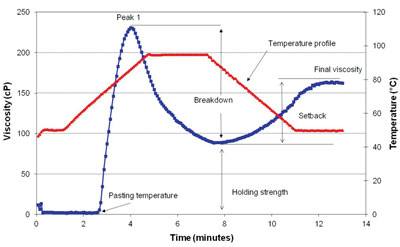

Petro-Canada recently participated in a hydraulic fluid energy efficiency evaluation on a Denison T6CM mobile vane pump at 2,900 psi. Hydraulic fluids with very high viscosity index (VHVI) base oils provide the best performance. In increasing temperatures, the viscosity of a multigrade fluid decreases less than that of a monograde fluid, providing the necessary volumetric efficiency at higher temperatures. This means the hydraulic fluid will flow faster in cold temperatures, contributing to improved mechanical efficiency.
Viscosity index verse viscosity number iso#
The viscosity of a multigrade is lower below 104° F than a monograde oil having the same ISO viscosity grade. Multigrade hydraulic fluids are formulated with high viscosity index base oils and additive packages to self-adjust to a wider temperature range than monograde hydraulic fluids. An ideal hydraulic fluid self-adjusts to the widest possible changes in temperature, ensuring a smooth startup as well as efficient peak-temperature operation. It also equals greater carbon dioxide (CO 2) emissions, which are damaging to the environment.

Higher fuel consumption equals higher costs. The engine must, therefore, burn more fuel to produce the desired amount of hydraulic work. As a result, the hydraulic pump must work harder to produce the required flow to hydraulic actuators. Thus, if viscosity is too high or too low, the resulting wear in parts leads to an additional decline in volumetric efficiency. Also, if the fluid is too thin, moving parts are not properly protected - resulting in metal-to-metal contact, overheating, parts wear, and eventual pump seizure. If viscosity is too low when oil temperatures increase, volumetric efficiency drops due to increased internal leakage. This eventually leads to metal fatigue and spalling, generating abrasive metal particles in the fluid and reducing pump life. Cavitation is created due to excessive pressure drop at the pump inlet. During lubrication starvation, the loss of the thin lubricant film protecting parts creates high contact temperature, excessive wear, and ultimately results in pump seizure. More simply stated: the viscosity of the hydraulic fluid must be thin enough for the hydraulic pump to start easily, especially at low temperatures, and to prevent it from working too hard (mechanical efficiency), but thick enough to prevent internal pump leakage, loss of pressure, and effective lubrication (volumetric efficiency).Įxcessive viscosity at low temperatures can result in reduced mechanical efficiency of the hydraulic system and, in more extreme situations, to lubricant starvation and cavitation. When it comes to hydraulic fluids, overall pump efficiency relies on obtaining the ideal balance between hydro-mechanical efficiency and volumetric efficiency. High and low temperature impact on viscosity However, recent evaluations have shown that switching to a single multigrade fluid for year-round operations can improve fuel efficiency for greater cost savings while maintaining - and even improving - lubrication protection. and Canada continue to change out hydraulic fluids for summer and winter use. Many mobile equipment operators in the construction, forestry, mining and transportation industries across the northern U.S. Very-high-viscosity-index (VHVI) fluids can improve fuel economy of mobile equipment by reducing load on the engine - especially at low ambient temperatures.


 0 kommentar(er)
0 kommentar(er)
